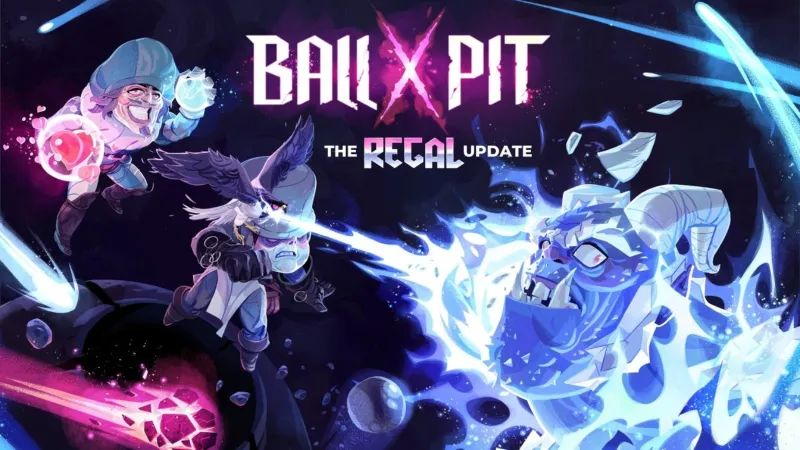
Wolfenstein: Youngblood was one among Nvidia’s huge ray tracing poster kids final yr, and it was even one of many free games you may get in the event you purchased a brand new RTX graphics card over the summer time. However, whereas its different freebie stablemate Control teleported its ray tracing assist in at launch, Wolfenstein: Youngblood positively dragged its cybernetic heels over it, with months and months passing after its preliminary July launch date with none phrase on when it would lastly pitch up. Finally, the reflection gods at Nvidia have spoken, and it’s going to be patched in as a part of their newest CES GeForce driver replace out there this week. Hoo-rah.
The replace comes somewhat late within the day for anybody to probably care about, maybe, however at the least it’s higher than not pitching up in any respect. Nvidia have additionally elaborated on precisely what sort of ray tracing you possibly can anticipate from Wolfenstein: Youngblood’s replace, specifically a heck of a number of reflections. You’ve received your weapons results reflections, dynamic real-time reflections being mirrored on enemies and reflections on different “moving game elements,” they stated of their blog post.
There’s solely a single On or Off setting in Wolfenstein: Youngblood’s menu settings, sadly, so that you received’t be capable of tailor your ray tracing expertise in the identical approach as Control’s RTX features sadly, however the excellent news is that the replace can even add DLSS assist in on the similar time. This ought to assist to offer your GPU a small efficiency increase in the event you discover your PC’s struggling to deal with all of it.
Hopefully, although, RTX homeowners shouldn’t have an excessive amount of hassle with it, supplied you retain DLSS switched on. Indeed, Nvidia go on to say that their entry-level RTX 2060 card ought to be able to hitting 60fps and above on max settings at 1920×1080 with DLSS enabled, whereas the RTX 2070 ought to be sufficient for 60fps+ on max at 2560×1440, albeit once more with DLSS switched on. For 60fps at 4K, in the meantime, you’ll possible want an RTX 2080, in keeping with Nvidia.
What they don’t point out is what sort of card you’ll have to play the game with out DLSS switched on. I’ve personally by no means had an issue with the slight glaze-like impact DLSS generally brings to a game, however others are extra delicate to those types of issues and easily can’t stand it for some purpose. As such, I’d hazard a guess that you simply’ll in all probability want at the least an RTX 2070 or above for taking part in the game on max settings at 1080p with out DLSS (and by extension at the least an RTX 2080 for 1440p), however I’ll carry you extra efficiency ideas and evaluation as soon as I’ve been capable of check out the game’s ray tracing and DLSS replace for myself.
If you possibly can’t wait that lengthy, although, why not forged your eye over Nvidia’s DLSS comparability trailer under. From the appears to be like of issues, DLSS appears to be like just about an identical to having it switched off in the event you ask me, and I don’t suppose it’s one thing you’re actually going to note in movement once you’re bombing round shotgunning Nazis within the face, so that you would possibly as effectively depart it switched on and punch up these body charges a bit.
Elsewhere in Nvidia’s CES driver replace, Quake II RTX can also be getting a photograph mode for customized screenshots as a part of its v1.three replace, and also you’ll discover a bunch of latest settings that allow you to set your individual most body price, allow GPU scaling, activate a particular energy saving mode and cut back system latency in Nvidia’s Control Panel.
Nvidia are additionally bringing Variable Rate Supersampling (VRSS) to VR games as a part of their CES driver replace as effectively. This ought to assist enhance VR picture high quality throughout the board, as it may be utilized by way of the Nvidia Control Panel to all DX11 VR games and functions (albeit solely ones permitted by Nvidia for the time being) that assist MSAA anti-aliasing and have one thing referred to as “forward renderers”. In a nutshell, VRSS can dynamically apply as much as 8x supersampling to the centre of a VR show (basically, the realm the place your eyes focus probably the most) and assist make pictures look sharper and extra outlined. It will solely kick in when there’s sufficient GPU headroom to take action, although, and it received’t come at the price of your VR headset’s refresh price, both.
Only 20 games meet Nvidia’s VRSS necessities for the time being, however there are many huge names in there together with Job Simulator, Killing Floor: Incursion, LA Noire: The VR Case Files, Lone Echo, Raw Data, Rick and Morty: Virtual Rick-ality, Robo Recall, Space Pirate Trainer and Talos Principle VR to call just some. For a full listing and extra information on how VRSS works, head over to Nvidia’s website.
For extra information from this yr’s CES, try our CES 2020 tag.




